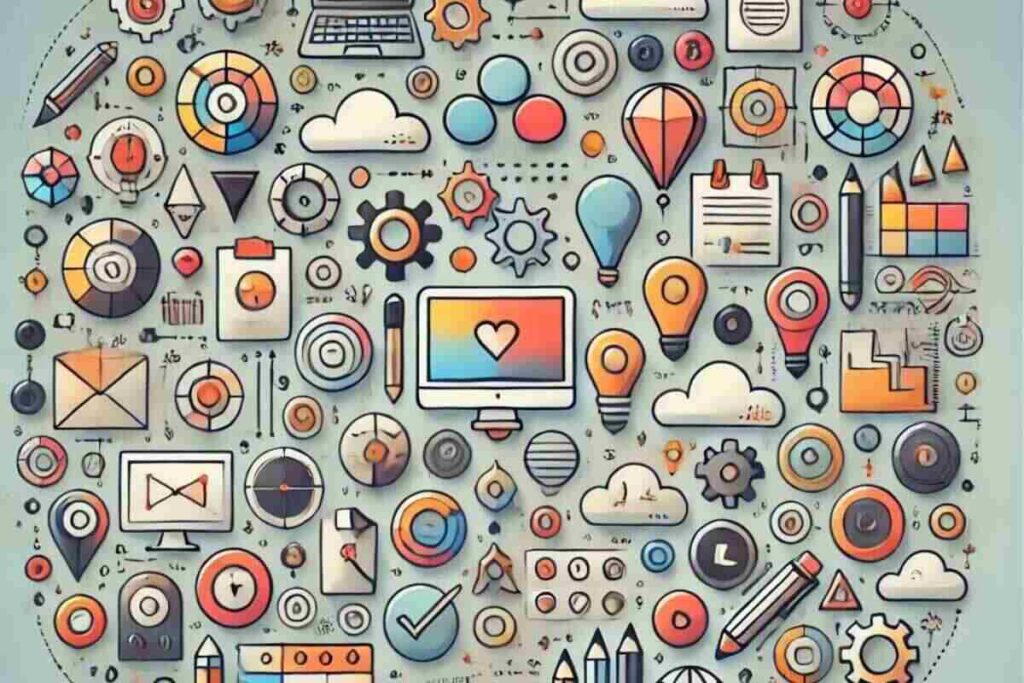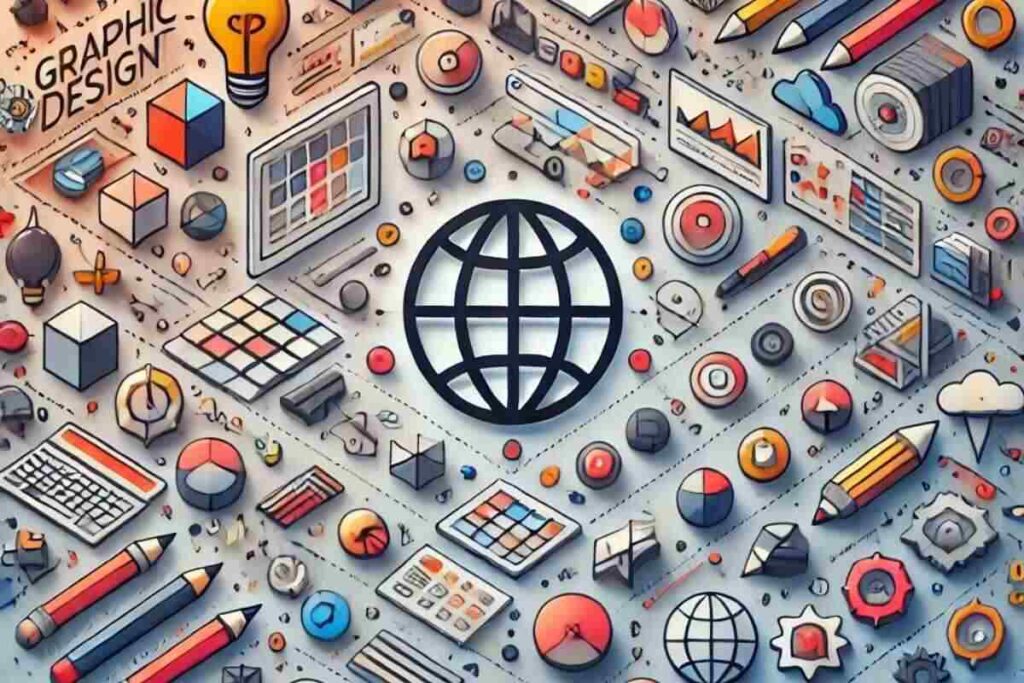Graphic design is a field that thrives on visual storytelling, and icons play a crucial role in delivering messages efficiently.
A graphic design icon is more than just a simple illustration; it represents ideas, brands, and functionality in a visually appealing way.
In this article, we will explore the significance of graphic design icons, different types of icons of graphic design, and their impact on branding and user experience.
What Are Graphic Design Icons?

Graphic design icons are small yet powerful visual elements used in design projects to convey meaning quickly. They are commonly seen in digital interfaces, branding, marketing materials, and website designs.
These icons simplify complex ideas and improve user experience by providing intuitive navigation.
Importance of Icons in Graphic Design
Icons play a vital role in enhancing visual communication. Here are some key benefits:
- Enhance Communication – Icons convey messages instantly, reducing the need for excessive text.
- Improve Aesthetics – They add visual appeal to designs, making them more engaging.
- Increase Usability – Icons make interfaces and websites more user-friendly.
- Support Branding – Unique and iconic graphic design elements help in brand recognition.
- Boost Engagement – Well-designed icons attract users’ attention and enhance interaction.
Types of Icons in Graphic Design
Flat Icons
Flat icons are minimalistic and use simple shapes and colors. They are widely used in modern web design and mobile applications.
Line Icons
These icons are made with clean, thin lines, making them elegant and easy to integrate into various designs.
3D Icons
3D icons add depth and realism, making them suitable for high-end branding and product visualization.
Hand-Drawn Icons
Hand-drawn icons provide a personal, artistic touch, perfect for creative projects and branding with a human feel.
How to Use Graphic Design Icons Effectively
- Keep It Simple – Avoid overly complex designs that may confuse users.
- Ensure Consistency – Use a uniform style across all icons in a project.
- Prioritize Clarity – Icons should be easily recognizable and understandable.
- Use High-Quality Formats – SVG and PNG formats ensure crisp visuals across different devices.
- Align with Branding – Icons should reflect the brand’s identity and tone.
The Role of Iconic Graphic Design in Branding

An iconic graphic design is a visual symbol that becomes synonymous with a brand. Examples include the Apple logo, the Twitter bird, or the Nike swoosh. These icons are instantly recognizable and create a strong emotional connection with consumers.
Companies invest in well-designed graphic icons to build brand loyalty and ensure a lasting impression.
Conclusion
Graphic design icons are essential elements that enhance communication, usability, and branding. Whether you are designing a website, a mobile app, or marketing materials, incorporating well-crafted icons of graphic design can significantly improve user experience.
By focusing on simplicity, clarity, and consistency, designers can create iconic graphic design elements that leave a lasting impact on their audience.
FAQs
What Are Graphic Design Icons?
Graphic design icons are small visual elements used to convey messages quickly in digital interfaces, branding, and marketing materials.
Why Are Icons Important in Graphic Design?
Icons enhance communication, improve aesthetics, increase usability, support branding, and boost engagement.
What Are the Different Types of Graphic Design Icons?
Common types include flat icons, line icons, 3D icons, and hand-drawn icons, each serving different design purposes.
How Do Icons Improve User Experience?
Icons simplify navigation, making digital platforms more intuitive and user-friendly by reducing text dependency.
What Makes an Effective Graphic Design Icon?
A good icon is simple, consistent, clear, high-quality, and aligned with the brand’s identity.
What File Formats Are Best for Icons?
SVG and PNG formats are ideal for maintaining high-quality visuals across various devices and screen sizes.
How Can Icons Enhance Branding?
Well-designed icons create brand recognition, strengthen identity, and establish an emotional connection with consumers.
Where Are Graphic Design Icons Commonly Used?
They are widely used in websites, mobile apps, social media, advertisements, and print marketing materials.
How Do Icons Influence Consumer Perception?
Icons shape brand perception by conveying professionalism, creativity, and trustworthiness through visual design.




